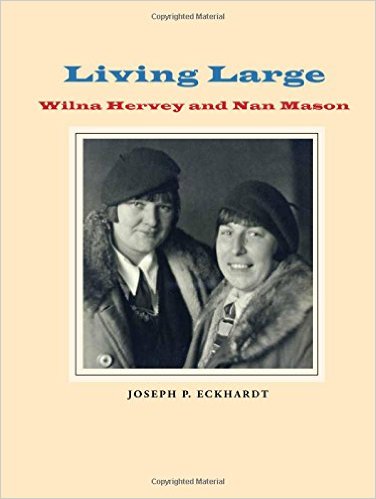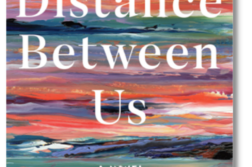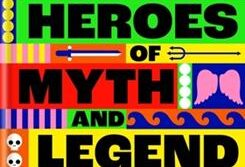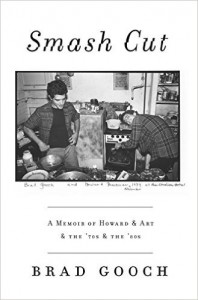 Smash Cut
Smash Cut
by Brad Gooch
Harper. 256 pages, $27.99
Of all the memoirists qualified to document New York City in the 1970s and ’80s, Brad Gooch has to rank near the top of the list. Currently a professor of English at William Paterson University and the author of well-regarded biographies of poet Frank O’Hara and fiction writer Flannery O’Connor, Gooch also wrote the novels Scary Kisses (1988) and The Golden Age of Promiscuity (1996), as well as volumes of poetry, cultural commentary, and even self-help. As a student and budding writer in New York, he crossed paths with the likes of Keith Haring, Robert Mapplethorpe (who photographed him), Madonna, Andy Warhol, and William Burroughs, among others. On top of all that, he was able to parlay his striking good looks into a relatively successful international modeling career. So it’s hardly surprising that Smash Cut is engaging, entertaining, and highly readable. It’s also a searing and tender account of Gooch’s relationship with his first love, filmmaker Howard Brookner, who died of AIDS in 1989. Gooch takes his readers through his final months with Brookner, doing so with unflinching honesty and great beauty. There has been quite a lot written in recent years about the New York this era (Patti Smith’s Just Kids, Edmund White’s City Boy, James Wolcott’s Lucking Out, and Felice Picano’s Art and Sex in Greenwich Village, among others), and Gooch’s Smash Cut is a worthy addition to that collective history.
Jim Nawrocki
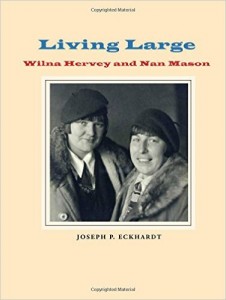 Living Large: Wilna Hervey and Nan Mason
Living Large: Wilna Hervey and Nan Mason
by Joseph P. Eckhardt
WoodstockArts. 200 pages, $39.50
Although the author chooses not to use the word “lesbian” or “gay” to describe the love affair of two regional artists, there’s no doubt that Wilna “Willie” Hervey (1894–1979) and Nan Mason (1896-1982) were the loves of each other’s lives for over six decades and shared a deep interest in art. Hervey, daughter of wealthy and loving parents, had every advantage, except for her health: she was very obviously born with hormonal problems, quickly growing tall, large, and excessively strong. As a young woman, she studied art with Winold Reiss, an important figure in the Harlem Renaissance, and she was also movie-mad. Through family connections, she found herself cast as “the mighty Katrinka” in the “Toonerville Trolley” comedy shorts. She originally acted under the name Wilna Wilde, though author Joseph Eckhardt does not explore the implication of that pseudonym. Her costar introduced Hervey to his daughter Nan, and the three lived together happily. The Mason family had had its share of tragedies, and Nan Mason was planning to become a stenographer, marry, and raise a family. But the women’s friendship grew quickly into romance, and they purchased land in Woodstock, New York, where they were known as “the Big Girls.” They became well-known as artists there, and both appeared to have had magnetic personalities. They also lived at various times in California and Florida—apparently free of animosity from their neighbors. George Bellows was Mason’s art teacher and she showed her work, which also included photography, in New York City. But as the years went by, Hervey grew jealous of the attention being paid to Mason’s landscape painting, and Mason stopped exhibiting. In her later years, Hervey concentrated on enamelwork and sketches. The author had access to an extraordinary wealth of archival material (the women never threw anything out) and the result is a lovingly written, profusely illustrated volume.
Martha E. Stone
 Cultural Encyclopedia of the Penis
Cultural Encyclopedia of the Penis
Edited by Michael Kimmel, Christine Milrod, and Amanda Kennedy
Roman & Littlefield. 262 pages, $85.
Cultural Encyclopedia of the Penis is a book whose subject matter, while not explicitly gay, is sure to be of interest to many readers of this magazine. Of 240 entries, fully seventeen percent address gay-related issues—entries include “barebacking,” “glory hole,” “size queen,” “public bathrooms,” and “tea rooms”—or they refer to relevant topics (“penis piercing,” “pornography and erotica,” “money shot,” “fetishism,” “locker rooms,” etc.). The book covers every conceivable area in which the penis plays a role, including myths (see Herm/Herma and Old Norse religion) legends (see papal testicles), religious texts (the Bible, the Kama Sutra), and cult practices (see Shunga, the Japanese word for art, and chi kung, an advanced form of qi gong “that is focused on strengthening the internal organs and increasing sexual energy”). Much of the writing is somewhat slipshod, and much of it will be old hat to GLBT readers (that there are tops, bottoms, and versatile men, for instance). However, most readers are sure to learn something new, and do so quickly, as no entry is longer than a couple of pages. And because it’s an encyclopedia, you can cherry-pick to your heart’s content.
Stephen Hemrick
 The Original High
The Original High
Album by Adam Lambert
Warner Brothers
The problem with sex, drugs, and rock ’n’ roll is that the euphoria they produce is hard to sustain over time. This doesn’t mean many of us stop trying. “I got the need for speed,” sings Adam Lambert on his third LP, also his best so far, “Let me feel the rush like the first night.” With “The Original High,” Lambert (aka “Glambert”) has generated his most mature album to date. It’s set in that most hollow of places, Hollywood. In the first single, “Ghost Town,” which is stellar, he laments the deaths of James Dean, Elvis, and himself: “Died last night in my dreams … searching for trust in city of vampires.” Last year, Lambert toured with Queen as a stand-in for the late Freddie Mercury, and his ability to channel Mercury’s hyper-theatrical vocals electrified songs like “Another Lonely Night” and “These Boys,” a self-affirmation for his gay male fans: “These boys can’t slow me down/ I listen to the radio, then I let it go.” The lyrics are proof that Lambert still needs to shake off the cheesiness of his American Idol days. Then there’s “There I Said It,” where he shrieks that he’s a “grown-ass man” and the regrettable rhyme “don’t know” with “Velcro” in the song “Underground.” Despite these lapses, The Original High represents a leap upward for Lambert and, one hopes, a harbinger of even higher notes to come.
Colin Carman


